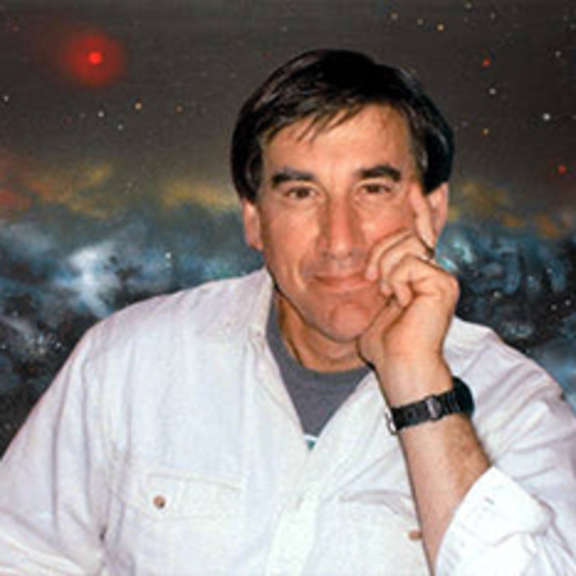Since 2002, Planetary Radio has visited with a scientist, engineer, project manager, advocate, or writer who provides a unique perspective on the quest for knowledge about our Solar System and beyond. The full show archive is available for free.
Search Planetary Radio
Explore Mars wants to look for life on the Red Planet. Not past life. Life thriving under the Martian surface right now. Chris Carberry will tell us how the ExoLance project might find it.
New Horizons passed through the orbit of Neptune on August 25th. By cosmic coincidence, this was the 25th anniversary of Voyager 2’s flyby of that big, blue world. We catch Principal Investigator Alan Stern right after a celebration in Washington.
Harvard’s Henry Lin led work that determined the soon-to-be-launched James Webb Space Telescope may be able to detect an alien civilization by analyzing its atmosphere.
Venus Express Project Scientist Håkan Svedhem tells us about the spacecraft’s harrowing descent into the Venusian atmosphere, what it is currently up to, and what he’d like to see next at that forbidding planet.
The National Research Council released its long-awaited report June 4th. Distinguished space policy analyst John Logsdon returns to Planetary Radio with his take on this latest attempt to determine the proper role of humans in space.
Planetary Radio visited Spacefest in Pasadena to talk with planetary scientist and space artist Dan Durda, Marc Rayman of the Dawn asteroid mission, and a guy who calls himself the Space Cowboy. We also eavesdrop on Apollo 17 Commander Gene Cernan and his lifelong fan, Griffith Observatory Curator Laura Danly.
The host of COSMOS: A Spacetime Odyssey, returns to our show with a behind the scenes look at the spectacular television series.
Finally found: an Earth-sized planet in the habitable zone. You’ll hear lead scientist Elisa Quintana make the announcement. Then OSIRIS REx mission Principal Investigator Dante Lauretta will tell us how the spacecraft will return a sample of material from the birth of the solar system.
It’s back to Alaska, this time to the Poker Flat Research Range, where former Director Neal Brown and his staff launched sounding rockets into the heart of the Aurora Borealis. Emily Lakdawalla explores newly-discovered and very distant dwarf planets, and Bill Nye the Science guy has the latest on NASA’s planetary science budget.
Astronomers Jay Pasachoff and Alex Filippenko join us for a conversation about their newest version of their monumental textbook,
24 spacecraft are either busy exploring the solar system or speeding toward an exciting destination. The Planetary Society's Senior Editor takes us on a whirlwind advance tour.
Take a spacecraft that can no longer survey the realm of galaxies and repurpose it to discover thousands of much nearer asteroids and comets. Put it to sleep for 2.5 years, then wake it up and start discovering even more! JPL’s Amy Mainzer is Principal Investigator for NEOWISE, the mission using this amazing space telescope.
Maybe it wasn’t “the comet of the century,” but ISON has left a scientific legacy that is beyond compare. That’s according to Karl Battams of NASA’s Comet ISON Observing Campaign on this week’s show.
The Planetary Society’s Senior Editor and Planetary Evangelist recaps this year’s revealing meeting of the Division for Planetary Sciences (DPS).
Carl Sagan’s longtime artistic collaborator, Jon Lomberg, designed the cover for the Voyager Interstellar Record. Now he wants to upload another message from Earth to New Horizons, the spacecraft on its way to Pluto.
“Starship Century—Toward the Grandest Horizon” is the new collection of fact and fiction assembled by Gregory and James Benford. The brothers are among the leaders of a renaissance in research and thinking about interstellar travel. They have returned to Planetary Radio to talk about this story of human destiny among the stars.
Only days after Voyager 1 reached interstellar space, forward thinkers met in Houston, Texas to consider how humans can become a starfaring species. Planetary Society Emeritus Executive Director Lou Friedman reports from the meeting.
The Mars Atmosphere and Volatile Evolution Mission (MAVEN) orbiter leaves for the red planet in November of 2013. Bruce Jakosky of the University of Colorado Boulder is its Principal Investigator. Mat Kaplan sat down with Bruce at a recent MAVEN workshop.
If you’re willing to accept the premise, the thrilling new independent feature film presents one of the most scientifically and technically accurate tales ever put on screen. We’ll talk with the director and producer, and then ask science advisor Kevin Hand for a reality check.


 Explore Worlds
Explore Worlds Find Life
Find Life Defend Earth
Defend Earth



















